- Home
- Alison Weir
Queen Isabella: Treachery, Adultery, and Murder in Medieval England Page 13
Queen Isabella: Treachery, Adultery, and Murder in Medieval England Read online
Page 13
Beside the fireplace was set a heavy wooden chair, resembling a bishop’s throne, for the Queen and settles, stools, or benches for her attendants, as well as a table and chests. Cushions and bench covers made by John de Falaise afforded Isabella and her ladies greater comfort. Windows, which had painted mullions and transoms, and perhaps sculptured moldings and linen curtains, were usually built into deep embrasures, with upholstered window seats. Large oriel windows had been introduced in many royal houses during the previous century, and they made rooms lighter. Glass was still a luxury only available to the rich and featured prominently in royal palaces. Lesser rooms or the service quarters merely had wooden shutters or glass panels above the shutters.
The walls in the royal chambers were often brightly painted with murals, chivalric emblems, or decorative borders and were normally hung with tapestries or hangings of silk, wool, damask, or extremely costly and rare velvet, which came from Florence. The floors were laid with tiles that were often embossed with heraldic designs. It was customary for floors to be strewn with herb-scented rushes or rush mats, which were provided by the office of the hall, but Turkey carpets, which were very expensively imported from Italy, had been introduced by Eleanor of Castile in the thirteenth century and were used extensively by her as floor coverings; carpets might also be thrown over tables or utilized as wall hangings.90 Isabella’s Household Book refers to her carpets being repaired. Queen Eleanor had also embellished her apartments with jeweled plate, Venetian glass, and metalwork of Damascus, which must have still been in evidence when Isabella was queen.
Rooms were lighted with candles in decorative sconces or torches set into iron cressets on the walls. Oil lamps were also used. Candles might be fixed onto spikes on a metal hoop that was hoisted to the ceiling by means of a pulley.
The Queen’s bedchamber would be dominated by her canopied bed with its rich hangings. The canopy would have been similar to the carved canopies seen on fourteenth-century tombs. Beds were fitted with a rope-mesh base that supported a feather mattress; Isabella’s feather bed might have been covered with dimity, as Marguerite of France’s was. Her pillows were stuffed with feathers and made of dyed fustian. John de Falaise made hangings of various colors and two scarlet covers for Isabella’s beds. At least two of the Queen’s demoiselles slept in her bedchamber on truckle beds that were stored beneath her own during the daytime; her Household Book records payments for cloth for coverlets for their beds.
The clothes for the Queen’s immediate use would be hung from “perches” on the wall, but the rest would be kept in the room known as her Wardobe, which was either downstairs or next to her bedchamber. Here, her clothes were stored in chests, presses, and covers and cases of rawhide.
Each of the principal rooms would have had its own privy, or garderobe, built into the wall. Sanitary facilities were primitive; there was rarely any system of flushing, and an open chute discharged waste into the moat below. Rags were used as toilet paper. Sometimes clothes were hung in garderobes (hence the name), because it was believed that the stench of human urine and excrement kept off the moths. During the thirteenth century, Henry III had made strenuous efforts to improve royal sanitation. One of his privy chambers was twenty feet long and was built above a deep pit that served as a sewage tank. He had white glass inserted in the windows of other privies, to stop the drafts, and at Westminster, after someone had tried to assassinate him by climbing up one of the privy vents that discharged into the Thames, he had bars fixed across them all. At Woodstock, to contain the stink from the privies, Henry had double doors fitted to them. In 1234, when a new water system was installed at Westminster, it fed a garderobe near the lesser hall.
Prior to the Black Death of 1348–49, very little attention was generally paid by the English to hygiene. Bathing did not become fashionable until Eleanor of Castile popularized the practice in the thirteenth century. Eleanor’s bath was a wooden tub lined with linen sheets, cushioned with sponges, and covered with a circular linen canopy. Following Eleanor’s example, aristocratic ladies bathed fairly regularly in hot water scented with flowers or sweet herbs; their attendants scrubbed them with sponges and used rose water for rinsing. Isabella seems also to have bathed frequently, for there are various entries in her Household Book mentioning the transportation by cart of “tubs for the Queen’s baths” as she moved from place to place, and the repair of those bath tubs, which suggests that they were used quite often; there are also payments for mending the garments that the Queen wore when bathing.
Water for washing was piped into the King’s Wardrobe at Westminster from a cistern below his and the Queen’s chambers, but it did not extend to the Queen’s lodgings. By 1324, Edward II had his own bathroom at Westminster, with a canopied oak tub set on a slab of Reigate stone. The floor had 2,250 paving tiles and was strewn with mats “on account of the cold.” Customarily, the royal children had baths on the eves of the great festivals of Easter, Whitsunday, and Christmas.
At most of the royal residences, the Queen’s apartments included a private chapel. It is recorded that, among the furnishings for her chapel, which accompanied Isabella wherever she went, were two alabaster statues, one of the Virgin and another, broken, of Saint Stephen. She also had cushions and kneelers embroidered with monkeys and butterflies, a dorsal of worsted painted with a Nativity scene, and a painted wall hanging showing the Apocalypse.
Usually, the Queen had her own private gardens; in castles, these might be laid out within the bailey; in manor houses, her rooms would look out onto them. These gardens variously had lawns, fishponds, herb beds, fruit trees, vines, aviaries, fountains, and arbors and were flanked by covered paths, pleached alleys, cloisters, or iron trellises. Outdoor areas, stairways, and courtyards were lit at night by lanterns.
Sadly, hardly any of the rooms used by Isabella survive in their original form today, and where they do exist, any trace of their decoration or contents has long disappeared; to obtain an idea of what they might have looked like, we should look at the reconstructed royal apartments in the Tower of London or the Queen’s rooms at Leeds Castle.
Each royal residence had its service area, with its kitchens and scullery, a buttery (where drinks were bottled and stored), a pantry (where bread was made and kept), a ewery, and a saucery. In castles, the kitchens were often built in the bailey because of the risk of fire; in manor houses, they were frequently in a block at the opposite end of the hall to the chamber block. Food for the King and Queen was on many occasions prepared in separate kitchens by their own personal cooks.
Dinner, the main meal of the day, was taken between nine and ten in the morning; a lighter repast, or supper, was served around five o’clock. Trestle tables were set up in the hall and spread with linen cloths. A fanfare of trumpets heralded the arrival of the King and Queen, who would emerge from their lodgings and take their places on the dais. Important guests would sit with them on the dais, above the saltcellar according to their degree; this cellar was always placed in front of the most important person present, and only he or she could use it; there were smaller saltcellars for everyone else. The rest of the household would eat at tables set at right angles to the dais, along the walls of the hall. Before the meal started, pages would enter with basins, ewers, and napkins, so that everyone could wash their hands. Then a Latin grace was said by one of the household chaplains; there would be another grace after the meal.
Before the meal began, the nef, a gold model of a ship studded with jewels, which contained precious spices for flavoring the food, was brought in with much ceremony and set before the King and Queen. Both Edward and Isabella owned such nefs.91 At the high table, the royal couple were served by squires on bended knee; the squires also carved the meats. The King and Queen ate off gold and silver plates, using beautifully crafted knives and spoons. Forks were rare, although Piers Gaveston had owned some for eating pears, and it is likely that Edward II did, too. The royal couple would have drunk from cups and goblets of precious metal or f
rom mazers, covered cups that were often used for drinking toasts. On the lower tables, food was served onto bread chargers, and men used their hunting knives to spear and serve it. Table manners were refined: men and women often shared chargers and cups, and it was up to the man to let his lady take the finest morsels.
Several different dishes were served at each course, the choicer ones being reserved for the high table. Much of the food served was spicy, highly flavored, or smothered in sauces, especially in winter, when most meat was salted or smoked. There was a great deal of game, and many varieties of meat and fish, but few vegetables. Meat was not allowed to the devout during Lent. Judging from entries in her Household Book, Isabella’s favorite dishes were oysters, pigeons, venison, “pickerels,” and pottage with beans (a kind of thick soup or stew); she particularly enjoyed cheese, and her gift of Brie to Isabella de Vesci indicates that she had it sent to her from France. Bread was served at every meal; it was the staple of everyone’s diet, but a more refined form would be offered to the King and Queen and their guests in the form of white manchet rolls, wrapped in napkins. Mustard and sauces, both savory and sweet, were served in saucers. As much care was taken with appearance and presentation as with taste; the Flemish chronicler Jean le Bel, who visited England in 1327, was very impressed with the standard of the food at court.
A variety of sweet dishes and fruits comprised the dessert course. Sugar was very expensive but had been used in the royal kitchens since the thirteenth century; honey was still used by most people as a sweetener. We know from entries in her Household Book that Isabella loved fruit; Eleanor of Castile had enjoyed oranges, lemons, pomegranates, dates, figs, and raisins, and some of these fruits were still being imported for the royal table by Italian merchants, who in addition brought spices from the East. Isabella liked tablets of sweetmeats, which were made for her by her apothecary, who supplied pounds of cloves as well; these were for flavoring and probably for medicinal use. The apothecary also mixed cordials for the Queen to drink.
The wine served at the royal table had usually been imported from Gascony, France, or the Rhine area and had to be drunk young; ale was the drink of the masses, for water was generally considered to be suspect, and the Household Book reveals that the Queen and her retinue drank gallons of it. Isabella did drink water, for she owned two silver water pitchers, but it was probably boiled first. Hippocras, or spiced wine, was sometimes served at the end of a meal.
Isabella liked to dress fashionably and introduced French styles of costume that were so widely copied that her influence on fashion could still be detected in the middle of the fourteenth century. Details of Isabella’s clothes appear in her Wardrobe accounts, which survive for the period 1314–15. Her tailor, John de Falaise, employed sixty workmen for making, maintaining, beating, cleaning, and repairing her clothes; the Queen’s Household Books record payments to him for such items as four pounds of silk of various colors for stitching robes, fourteen pounds of thread, silk fastenings, and four dozen hooks for robes and mantles. In 1311–12, he supplied fifteen robes, thirty pairs of stockings, thirty-six pairs of shoes, three cloaks, another cloak of tiretaine (or linsey-woolsey, a blend of wool and linen imported from Florence), six hoods, six bodices, a pelicon of triple sindon (heavy satin or linen), and a tunic of silk stuff known as Tartarin cloth of Lucca. He also made all the hangings for the Queen’s chapel. Small wonder, then, that he and his busy team were supplied with thirty pounds of candles so that they could work through the dark winter evenings.
Isabella popularized the sideless cyclas, or surcoat, which was worn over the undergown and was trimmed with fur or other decoration round the edges. She also affected the pelicon, a voluminous fur-lined mantle with slits in front for the arms; Isabella wore hers with a great cowled hood falling over her shoulders, as depicted in a manuscript illustration of her with her son Edward in the Bodleian Library, Oxford. This same picture shows her wearing a crown and a diaphanous gauze veil over netted cauls; she has abandoned the chin-barbe shown in other representations of her. Isabella and her ladies also set a trend for gowns that were lower cut than had been seen for centuries.
Isabella needed little excuse to order new clothes or jewels, and each notable occasion was marked by the purchase of a new chaplet of gold. One particularly beautiful example was set with rubies, sapphires, emeralds, diamonds, and pearls. When she attended the wedding of one of her demoiselles, Katherine Brovart, the Queen wore a new golden circlet and a girdle of silk that was studded with silver and encrusted with three hundred rubies and eighteen hundred pearls; together, these items cost £32. In 1311, among precious objects from the King’s store delivered into the Queen’s Wardrobe were three gold brooches studded with rubies and emeralds, worth £40. On 2 February 1312, the Feast of the Purification of the Virgin Mary, the Queen appeared in a beautiful cloak adorned with fifty gold “knots,” which were decorative bows or loops. Five hundred silver-gilt knots were attached to other garments made for Isabella.
The Queen’s goldsmiths were Thomas de Westminster and John de Saint Florentino; they made jewelry for her, melted down her old plate and refashioned it anew, and repaired damaged plate and cutlery. When not in use, the Queen’s plate, rich robes, and other valuables were locked up in great leather strongboxes and coffers bound with iron and kept in her treasury, or wardrobe, which was housed in a turret in the Tower of London. John de Falaise may have been in charge of this treasury, or at least used it as a workroom, for he was constantly repairing articles found there.92
Isabella could never be accounted a major political figure in the years prior to 1325, but her surviving Household Books contain evidence that she worked indefatigably behind the scenes, writing an endless stream of letters on both domestic and political issues, many of them to influential people.
For the rest of the time, she lived the traditional life of a medieval queen, gracing state and ceremonial occasions, managing her household and estates, bearing heirs to the throne, looking after her financial interests, and dispensing alms and charity. Among several benefactions, as joint overlord of Coventry with the cathedral prior, she gave the ground on which the collegiate church of Saint John the Baptist was built and handsomely endowed it. Like many queens before her, Isabella was patroness of the Royal Hospital of Saint Katherine by the Tower of London, which had been founded in the twelfth century by Matilda of Scotland, wife of Henry I.93
Above all, Isabella supported her husband. Even though he had done much to forfeit her love and respect, she was exemplary in her devotion and loyalty to Edward, and for this, and her many other evident qualities, she earned the respect and love of the barons and people.
There can be little doubt that relations between Edward and Isabella improved after Gaveston’s death. No longer did she have to compete with a third party for her husband’s attentions, nor endure the humiliation of other people’s pity. Neither did she have to suffer in silence the usurpation of her high position, which may have hurt her more than being forsaken for another man; young as she had been during the years of Gaveston’s supremacy, she had perhaps thought more of the slights to her pride and her birth rather than to her burgeoning womanhood. Now that she was maturing, both physically and mentally, she was perhaps becoming more aware of how Edward had failed her on a personal level and looking to him for more than he had hitherto been prepared or able to give—later evidence suggests that she was a sensual, even highly sexed, woman. Fortunately, for some time to come, Edward would be hers alone, and their marriage much happier and more harmonious, for there is no evidence that he made any effort in the next few years to replace Gaveston. During this period, it might have seemed to onlookers that Isabella had filled the void left by Piers.
There is no record of any discord between the King and Queen during the next decade. Edward treated Isabella with honor and provided very well for her; his Wardrobe was responsible for her household finances,94 and he himself provided the jewels, cloths of gold, and Turkey carpets that she
gave as gifts and offerings; it was William de Boudon’s responsibility to look after them and ensure that they reached the correct recipient. The only gift that Isabella paid for herself during her marriage was the gold nugget she offered at the shrine of Becket. Thanks to Edward, she lived in luxury and wanted for nothing in a material sense; her husband even allowed her to overspend by up to £10,000 each year. With her vast landed assets scattered throughout north Wales and seventeen English counties, and her generous income, which would in time be augmented by her dower, she was as great a feudal magnate as any of the earls.
Edward seems to have respected and appreciated Isabella’s intelligence, good judgment, and loyalty to himself, and he was happy for her to mediate in political affairs from time to time, especially after it became clear that this usually proved beneficial to him. Whenever circumstances found them apart, husband and wife corresponded frequently; Edward’s letters were sent under his secret seal, so few survive. The King and Queen had also established a sexual relationship, although as has been postulated, it may have been only occasional. However, if they were not lovers in the truest sense, they at least enjoyed an amicable partnership with shared mutual interests and were supportive of each other. To all intents and purposes, theirs was a successful royal marriage, and in the years to come, Isabella’s support would prove invaluable to her husband and win her golden opinions.
CHAPTER FOUR
His Dearest Companion
On 23 February 1313, after much persuasion by Hereford and the papal legates, Lancaster and Warwick at last handed over Gaveston’s treasure to the King, which slightly improved relations between Edward and his cousin. But the Earl still wanted Gaveston declared a felon, and that Edward would never agree to.

 Richard III and the Princes in the Tower
Richard III and the Princes in the Tower Britain's Royal Families: The Complete Genealogy
Britain's Royal Families: The Complete Genealogy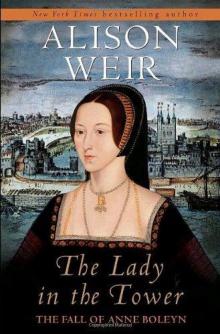 The Lady in the Tower: The Fall of Anne Boleyn
The Lady in the Tower: The Fall of Anne Boleyn Six Wives of Henry VIII
Six Wives of Henry VIII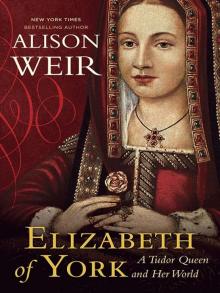 Elizabeth of York: A Tudor Queen and Her World
Elizabeth of York: A Tudor Queen and Her World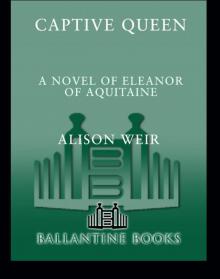 Captive Queen
Captive Queen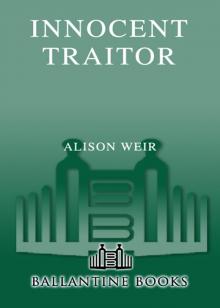 Innocent Traitor
Innocent Traitor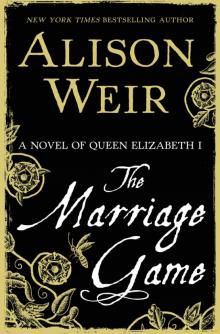 The Marriage Game
The Marriage Game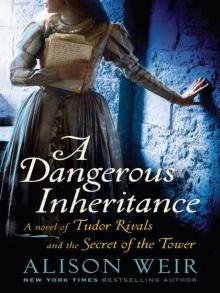 A Dangerous Inheritance
A Dangerous Inheritance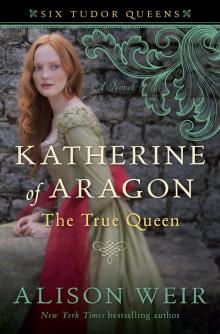 Katherine of Aragón: The True Queen
Katherine of Aragón: The True Queen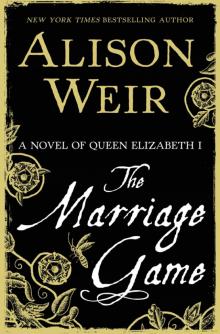 The Marriage Game: A Novel of Queen Elizabeth I
The Marriage Game: A Novel of Queen Elizabeth I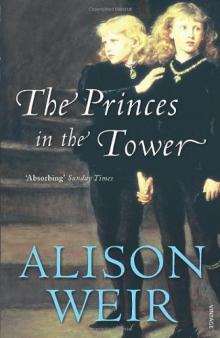 Princes in the Tower
Princes in the Tower Anne Boleyn: A King's Obsession
Anne Boleyn: A King's Obsession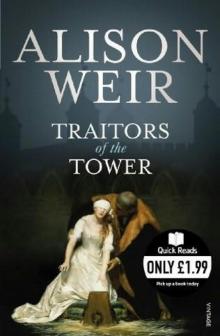 Traitors of the Tower
Traitors of the Tower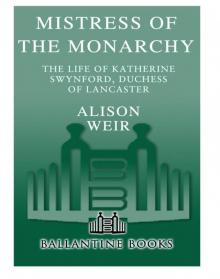 Mistress of the Monarchy: The Life of Katherine Swynford, Duchess of Lancaster
Mistress of the Monarchy: The Life of Katherine Swynford, Duchess of Lancaster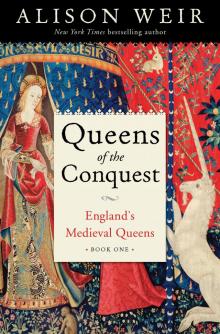 Queens of the Conquest: England’s Medieval Queens
Queens of the Conquest: England’s Medieval Queens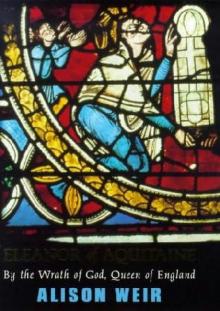 Eleanor of Aquitaine: A Life
Eleanor of Aquitaine: A Life Mary, Queen of Scots, and the Murder of Lord Darnley
Mary, Queen of Scots, and the Murder of Lord Darnley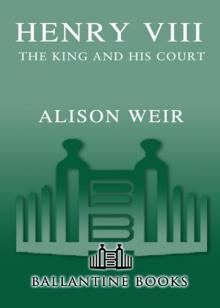 Henry VIII: The King and His Court
Henry VIII: The King and His Court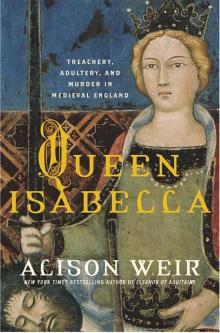 Queen Isabella: Treachery, Adultery, and Murder in Medieval England
Queen Isabella: Treachery, Adultery, and Murder in Medieval England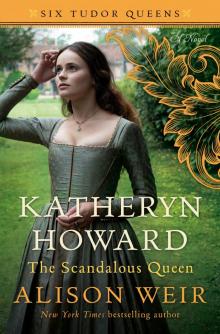 Katheryn Howard, the Scandalous Queen
Katheryn Howard, the Scandalous Queen Arthur- Prince of the Roses
Arthur- Prince of the Roses The Wars of the Roses
The Wars of the Roses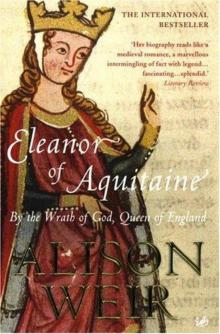 Eleanor of Aquitaine: By the Wrath of God, Queen of England
Eleanor of Aquitaine: By the Wrath of God, Queen of England Mary Boleyn: The Great and Infamous Whore
Mary Boleyn: The Great and Infamous Whore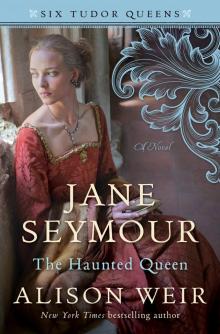 Jane Seymour: The Haunted Queen
Jane Seymour: The Haunted Queen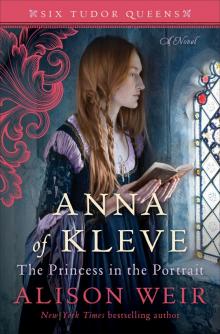 Anna of Kleve, the Princess in the Portrait
Anna of Kleve, the Princess in the Portrait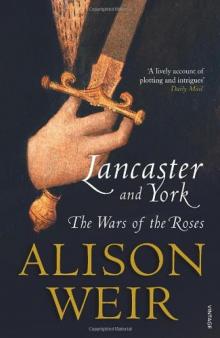 Lancaster and York: The Wars of the Roses
Lancaster and York: The Wars of the Roses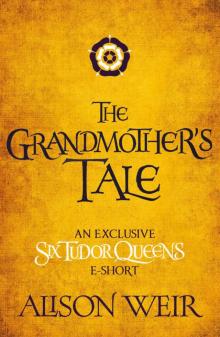 The Grandmother's Tale
The Grandmother's Tale The Princess of Scotland (Six Tudor Queens #5.5)
The Princess of Scotland (Six Tudor Queens #5.5)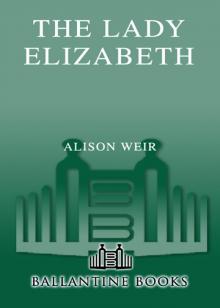 The Lady Elizabeth
The Lady Elizabeth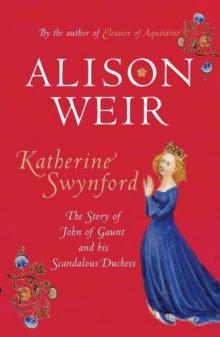 Katherine Swynford: The Story of John of Gaunt and His Scandalous Duchess
Katherine Swynford: The Story of John of Gaunt and His Scandalous Duchess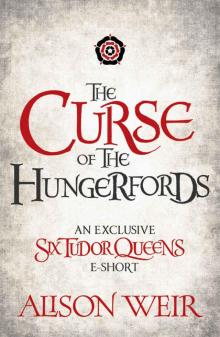 The Curse of the Hungerfords
The Curse of the Hungerfords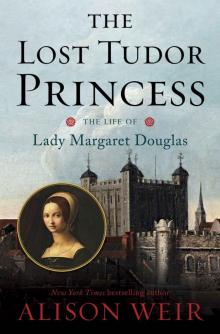 The Lost Tudor Princess: The Life of Lady Margaret Douglas
The Lost Tudor Princess: The Life of Lady Margaret Douglas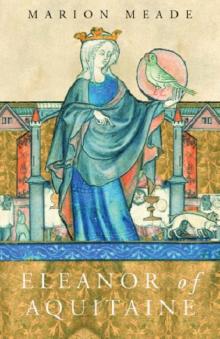 Eleanor of Aquitaine
Eleanor of Aquitaine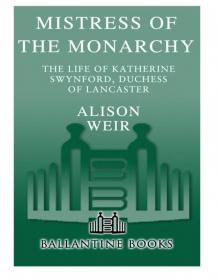 Mistress of the Monarchy
Mistress of the Monarchy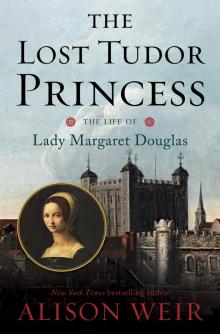 The Lost Tudor Princess
The Lost Tudor Princess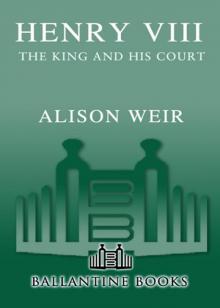 Henry VIII
Henry VIII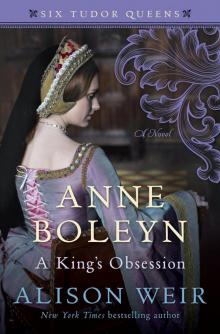 Anne Boleyn, a King's Obsession
Anne Boleyn, a King's Obsession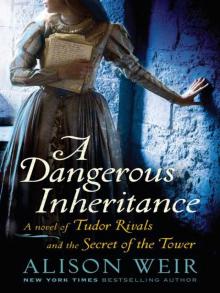 A Dangerous Inheritance: A Novel of Tudor Rivals and the Secret of the Tower
A Dangerous Inheritance: A Novel of Tudor Rivals and the Secret of the Tower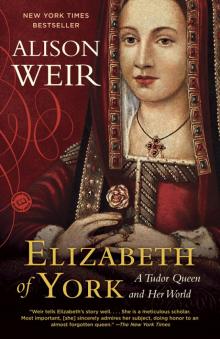 Elizabeth of York
Elizabeth of York Katherine of Aragon, the True Queen
Katherine of Aragon, the True Queen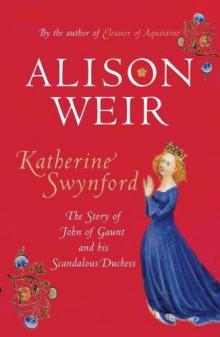 Katherine Swynford
Katherine Swynford Wars of the Roses
Wars of the Roses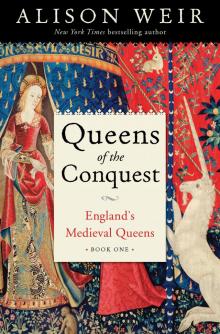 Queens of the Conquest
Queens of the Conquest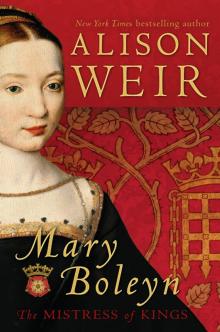 Mary Boleyn
Mary Boleyn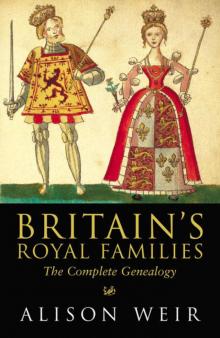 Britain's Royal Families
Britain's Royal Families The Tower Is Full of Ghosts Today
The Tower Is Full of Ghosts Today Life of Elizabeth I
Life of Elizabeth I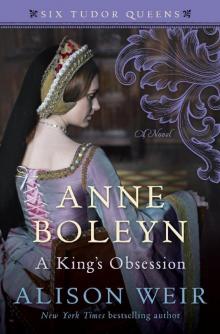 Anne Boleyn A King's Obssession
Anne Boleyn A King's Obssession Lancaster and York
Lancaster and York Jane Seymour, the Haunted Queen
Jane Seymour, the Haunted Queen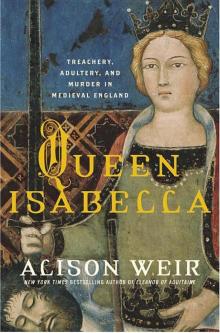 Queen Isabella
Queen Isabella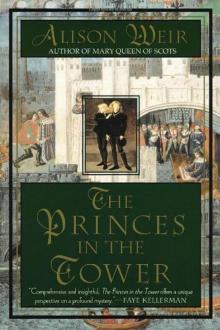 The princes in the tower
The princes in the tower